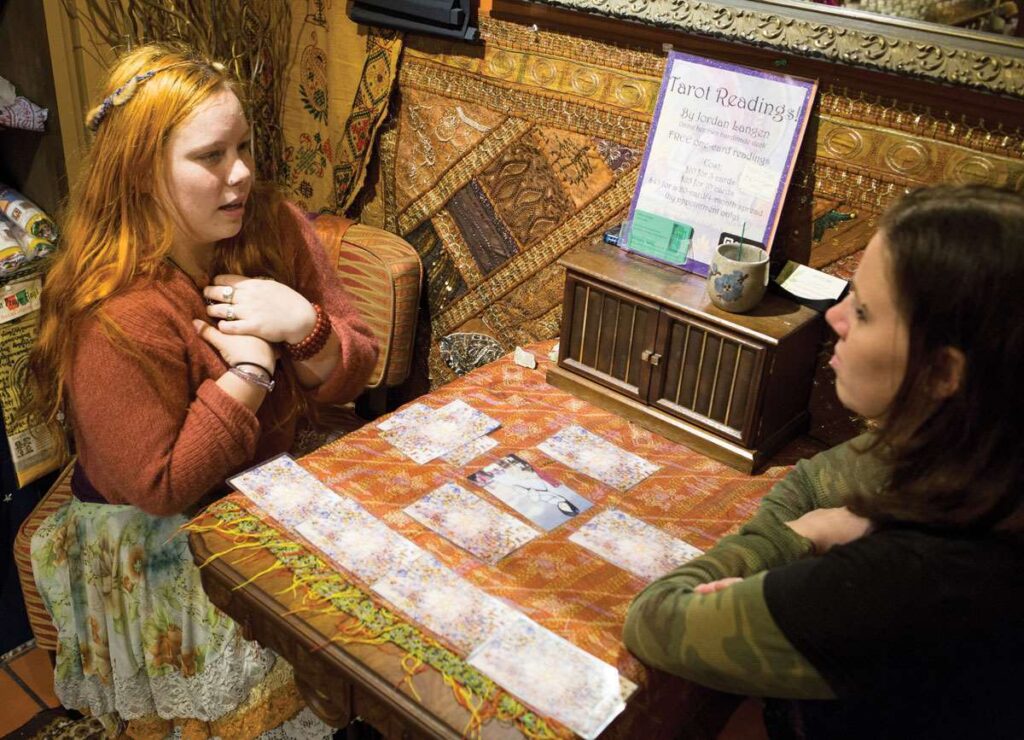
Avoid These Tarot Pitfalls: Errors That Skew Your Readings

Tarot readings offer deep insight and guidance, but even seasoned practitioners can fall into traps that distort their messages. In this article, we explore the common pitfalls in tarot readings that may undermine accuracy and lead to misinterpretations. Whether you’re an experienced reader or a curious beginner, our guide will help you identify and overcome these obstacles. Understanding these errors is the first step to ensuring your readings remain clear and genuine, empowering you to deliver more effective insights. Dive in to discover the challenges, their underlying causes, and actionable solutions to enhance your tarot practice now and beyond.
Understanding Tarot Pitfalls and Their Impact
Tarot readers—whether beginners or seasoned practitioners—often encounter pitfalls that can distort the true meanings of the cards. The integrity of a tarot reading depends on managing both internal distractions and external influences that may alter the interpretation. In today’s dynamic spiritual landscape, false assumptions and premature judgments can hinder the process of obtaining accurate insights. Recognizing the origins of these errors is essential for overcoming them.
A common factor that leads to misguided readings is the reader’s mindset. When distracted by personal biases or stress, the deep intrinsic messages of the tarot may be overshadowed. This section unravels the multifaceted nature of tarot pitfalls, explaining how stress, over-confidence, and external influences can warp the inherent symbolism of the deck. For more in-depth analysis, refer to respected metaphysical and psychological research portals.
By embracing a systematic approach and remaining vigilant, tarot readers can reduce distortions in their readings. The practice of self-reflection and continuous education not only refines interpretations but also deepens the connection with the cards. Awareness of these pitfalls is the cornerstone of every effective tarot session, ensuring that the messages remain true and untainted by personal agendas.
Common Mistakes That Skew Readings

A recurring issue among tarot practitioners is the occurrence of avoidable mistakes that lead to skewed readings. Often, readers make assumptions without fully considering the context or the unique energies of the querent. This can result in the infusion of personal emotions or preconceived notions that misrepresent the cards’ true messages.
Another frequent mistake involves misinterpreting card symbolism due to a limited understanding of traditional tarot lore or reliance on modern, sometimes shallow, interpretations. Many times, readers force a narrative that fits their expectations rather than allowing the cards to speak for themselves. This forced narrative diverts the consultation from genuine insights.
Additionally, reading under time constraints or when emotionally vulnerable can significantly contribute to these errors. It is vital for practitioners to take their time and enter a state of calm mindfulness before beginning a reading. Trusted sources like historical tarot texts or contemporary expert blogs offer further guidance. Below, we delve into these topics with detailed examples and case studies.
Overinterpretation Due to Emotional Interference
When personal feelings infiltrate a reading, neutral symbols can become overly charged with emotion, leading to overinterpretation. Emotional interference can blur the clarity of the reading, making it challenging for both reader and querent to grasp the card’s true significance.
For instance, a reader undergoing personal hardship might project feelings of despair onto cards that traditionally symbolize transformation or change. Adopting an objective stance and practicing regular self-reflection are key to preventing such pitfalls.
Misreading Symbolic Images
Tarot cards are laden with symbolism. Misreading these visual cues due to superficial study can lead to incorrect conclusions. For example, a card that generally signifies hope might be misinterpreted as a warning of upcoming challenges if its imagery is viewed without proper contextual understanding.
To avoid these pitfalls, it is vital to have a comprehensive grasp of the historical and cultural backgrounds of the cards. Continuous study and expert consultation bridge the gap between traditional meanings and modern reinterpretations.
How Personal Bias and External Influences Distort Interpretations

Personal bias and external influences are two powerful factors that can distort the accuracy of tarot readings. Many readers unknowingly inject their own life experiences and beliefs into their interpretations, which can skew the results to mirror their personal circumstances more than the querent’s reality.
It is crucial for readers to maintain a neutral stance during sessions. External factors—such as ambient noise, unsolicited opinions, or even an unsuitable physical environment—can disrupt the intuitive flow needed for a clear tarot reading. Eliminating these distractions enhances the purity of the communication between the cards and the reader.
Recognizing and mitigating personal bias is an ongoing process that calls for heightened self-awareness and deliberate practice. Techniques like meditation and journaling can help identify subconscious influences, while structured methodologies support maintaining clarity throughout the session.
Self-awareness as a Preventative Measure
Developing a routine of self-reflection before a reading helps identify any pre-existing biases. This is particularly important during emotionally turbulent times, when personal experiences might unduly color interpretations.
Readers benefit from setting aside their own emotional states and entering the session with a calm, balanced mindset to ensure the messages come directly from the cards.
The Role of Environment in Shaping Interpretations
The physical surroundings during a tarot reading can greatly affect its outcome. Poor lighting, distracting sounds, or a cluttered space can cause misinterpretation of subtle cues and symbols.
Creating a quiet, dedicated space for readings is essential for a deeper connection with the cards. A serene environment paves the way for clear insights while reducing the impact of external disturbances.
Best Practices for Accurate Readings
Achieving accurate tarot readings requires thoughtful preparation and commitment to best practices. Over time, experienced readers have developed key strategies that significantly reduce misinterpretations. Establishing a consistent routine and effective pre-reading practices are among the most valuable steps to ensure the messages are communicated authentically.

One top recommendation is to set aside time for self-calibration before each session. Meditation, grounding exercises, or simply a few moments of silence can help clear the mind of lingering distractions. Developing personalized rituals that foster clarity and openness is highly encouraged.
Furthermore, keeping a detailed record of past readings and reflecting on their outcomes can enhance your interpretative skills. Over time, this archive becomes an invaluable resource, offering insights into recurring themes and areas for growth.
The Importance of Rituals and Preparation
A personal ritual before a tarot reading—whether it’s lighting a candle, reciting a mantra, or setting an intention—helps create a conducive mental state for unbiased interpretation.
By establishing these protocols, you honor the tarot tradition and create a protective space that minimizes the intrusion of negative or distracting energies.
Integrating Feedback and Continuous Learning
Actively seeking feedback from clients or peers about the accuracy of your readings is invaluable. Constructive criticism helps you identify and address blind spots in your interpretations.
Incorporating lessons learned from each session refines your approach and evolves your skills. Continuous learning ensures your methods stay fresh and effective, keeping pace with an ever-evolving spiritual landscape.
Tips to Overcome Common Tarot Reading Errors
Improving your tarot reading skills means recognizing mistakes and actively applying practical tips to avoid them. Many readers discover that certain strategies significantly enhance the clarity and depth of their sessions. One fundamental tip is to view each reading as a unique conversation with the universe, free from the influence of past sessions or external pressures.
A practical approach is to set clear intentions before starting a reading. By defining the questions and topics to be explored, you reduce the risk of your subconscious steering the interpretation off track. Intent-driven readings help you remain focused and ensure the insights are both relevant and precise.
Regular practice and periodic self-assessment are also vital. Engage in exercises that challenge your usual interpretations and expand your ability to view cards from multiple perspectives. This adaptability helps overcome ingrained habits that may diminish the accuracy of your readings.

Content Addictional
In the realm of tarot, continuous development is key. Many advanced practitioners recommend participating in group discussions and workshops to deepen understanding and share experiences. Peer interactions expose you to alternative methodologies and diverse perspectives that may not emerge through solitary practice.
Complementing your practice with historical research on tarot symbolism can enrich your understanding of how the cards have evolved over centuries. Delving into scholarly articles, historical texts, and lectures helps bridge modern intuition with ancient wisdom, making it easier to identify subtle discrepancies that arise when applying contemporary contexts to timeless symbols.
Moreover, leveraging technology—such as tarot apps and digital archives—provides immediate access to a wealth of interpretations and methods. These tools complement traditional techniques, merging the old with the new to foster both accuracy and innovation in your practice. Using these resources can help you stay updated on recent developments in tarot understanding.
Setting aside time for self-reflection after each session is also essential. Whether in solitude or through discussions with a mentor, evaluating what worked well and identifying areas for improvement can lead to significant progress. This cycle of continuous learning strengthens your ability to overcome recurring errors.
In conclusion, avoiding tarot pitfalls requires self-awareness, regular practice, and a commitment to honest interpretation. By understanding the roots of common errors and applying the strategies discussed, you can improve your reading accuracy and provide insightful guidance to clients or to yourself. Remember, every card speaks its own truth, and by minimizing personal biases and interpretative mistakes, you ensure that the tarot’s wisdom shines through clearly. Empower your readings with mindfulness, preparation, and structured practices that honor both the cards and your intuition, transforming potential pitfalls into opportunities for growth and deeper understanding.


